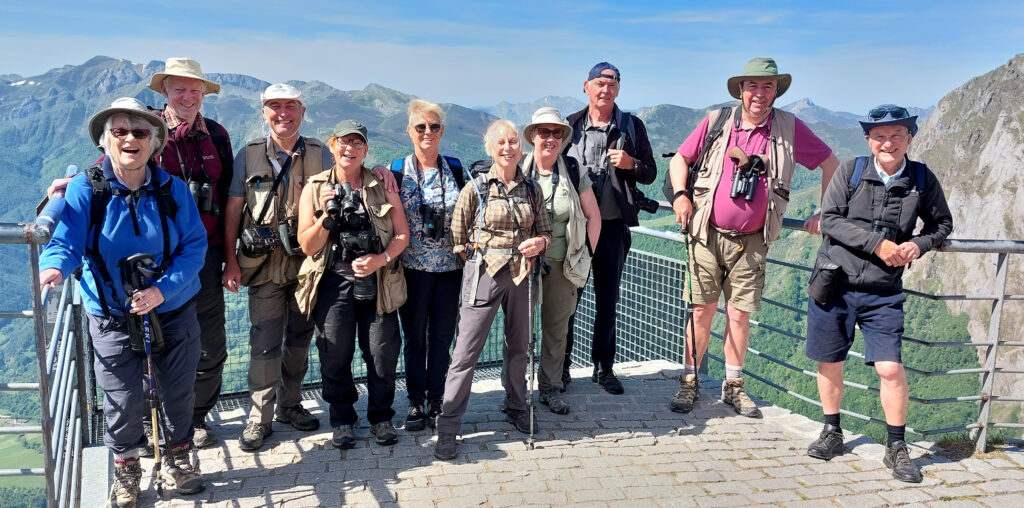
We begin with plenty of screaming Swifts right outside the fabulous Parador de Benavente, before setting off a short way south to explore the Reserva Natural de Lagunas de Villafáfila. As soon as we arrive in this vast rolling plain of traditionally farmed land dotted with shallow lagoons, we are struck by the number of Black Kites and White Storks, all across the colourful landscape of ochre cereal fields, fresh green meadows and vivid carpets of red poppies, white daisies and purple vetch. Our first roadside stop produces Spotless Starling and a Short-eared Owl hunting right next to the road, along with a male Marsh Harrier and plenty of Lesser Kestrels, while a couple of Ravens pass by. Suddenly, we notice a magnificent male Great Bustard strutting slowly in a meadow adjacent to the road and a closer look produces eight more of these stately birds. A short way further along the road, bearing next to no traffic, we spot another two male Great Bustards and another close Short-eared Owl, on the ground and also against the deep blue sky, along with a Booted Eagle.
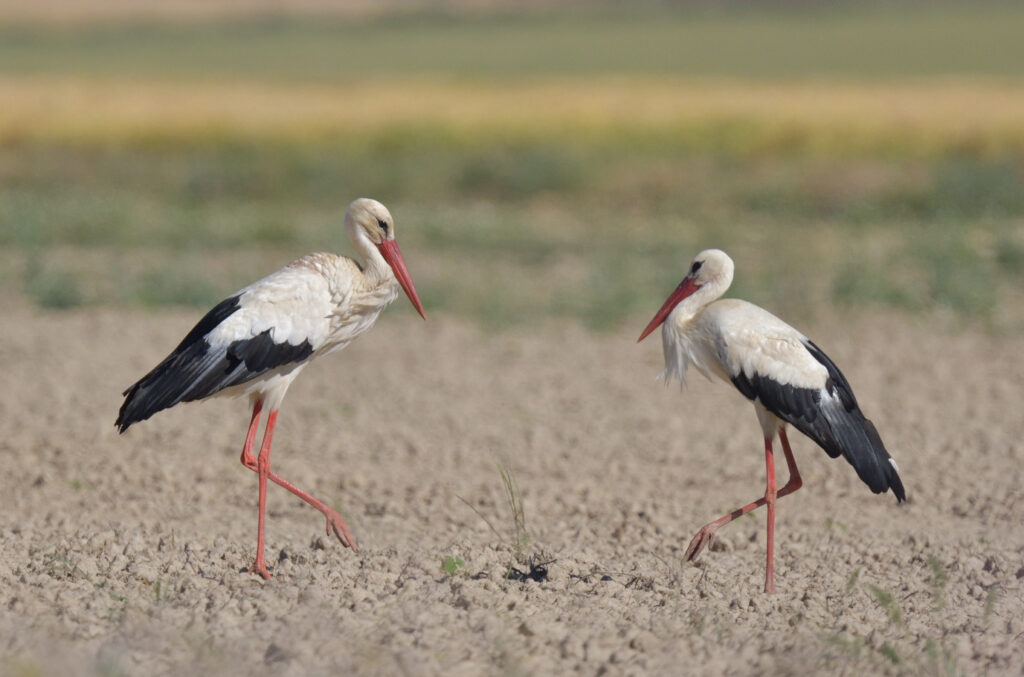
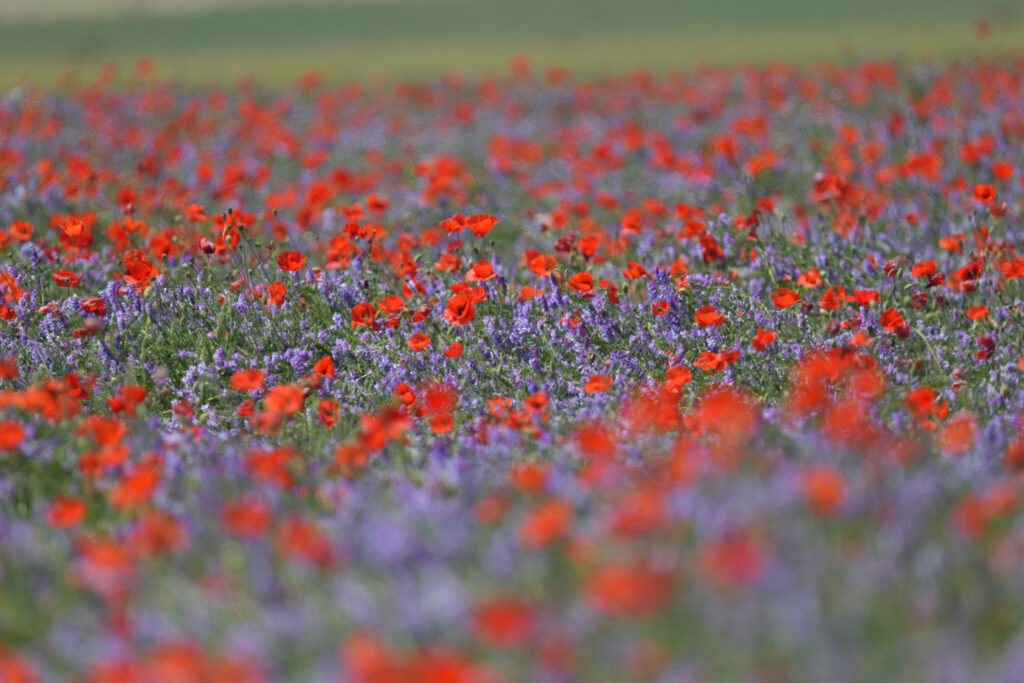
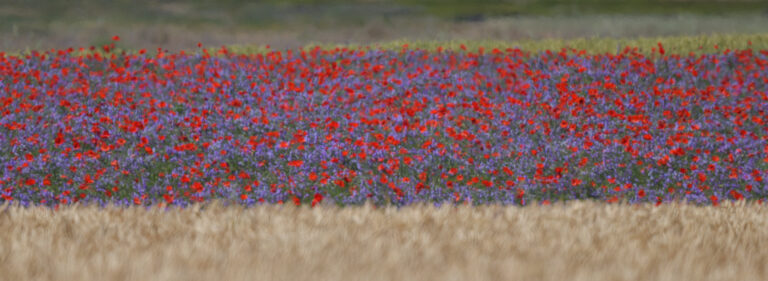
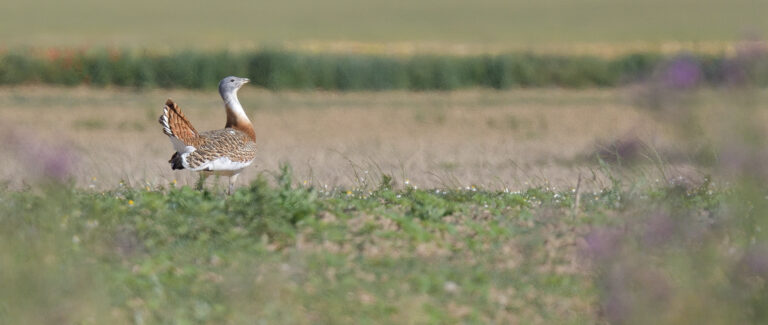
Moving on to a small lagoon, we count 13 Spoonbills, along with a couple of Gull-billed Terns, several Black-winged Stilts and a singing male Iberian race Yellow Wagtail, with a white throat and supercilium and a blue-grey head. At the next stop, we add Rock and Tree Sparrows to the growing list. By now, it’s late morning and time for a traditional tapas-style lunch in a local restaurant in sleepy Villafáfila.
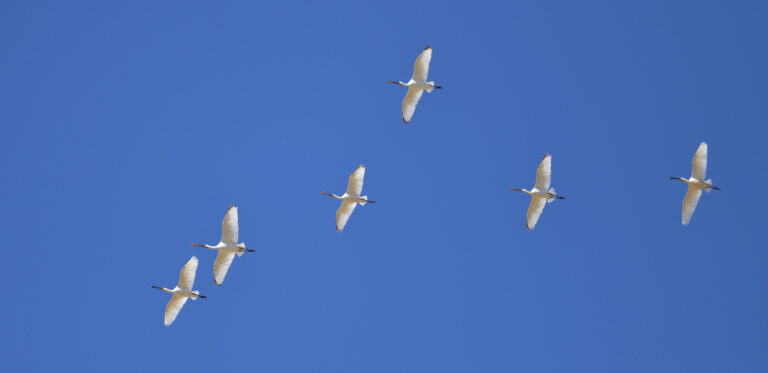
After lunch, we visit the fifteenth century church dedicated to Santa Maria de Moral, home to seven pairs of White Storks. Judging by the bulky size of the nests, piled high with sticks, they have probably been there for almost as many centuries as the church.

Moving on, we stop for a circling pale phase Booted Eagle and then a Hoopoe, before reaching the large Laguna de Salina Grange, dotted with numerous Shelduck, Black-winged Stilts, Avocets and a couple of Greater Flamingos, with loads of Gull-billed Terns hunting over the adjacent meadows. In the nearby abandoned village of Otero de Gariegos, we find more Rock Sparrows as well as a low sandy bank with several nest holes freshly dug by spectacularly colourful Bee-eaters. Amongst all the Lesser Kestrels, we find a couple of male Common Kestrels, with spotted backs and lacking a grey wing patch, while several Short-toed Larks are the last new bird for the list, making a good tally of 50 species today.
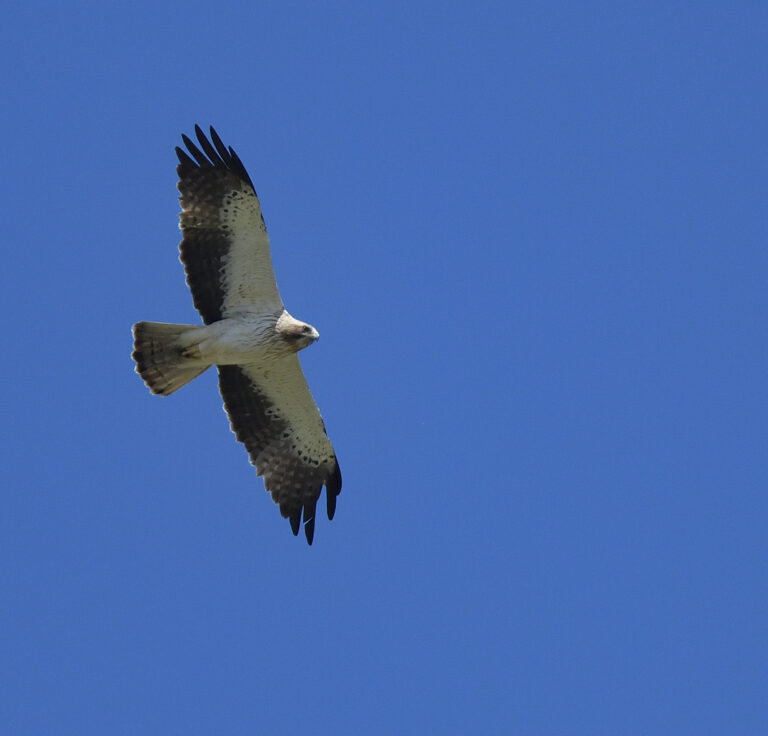
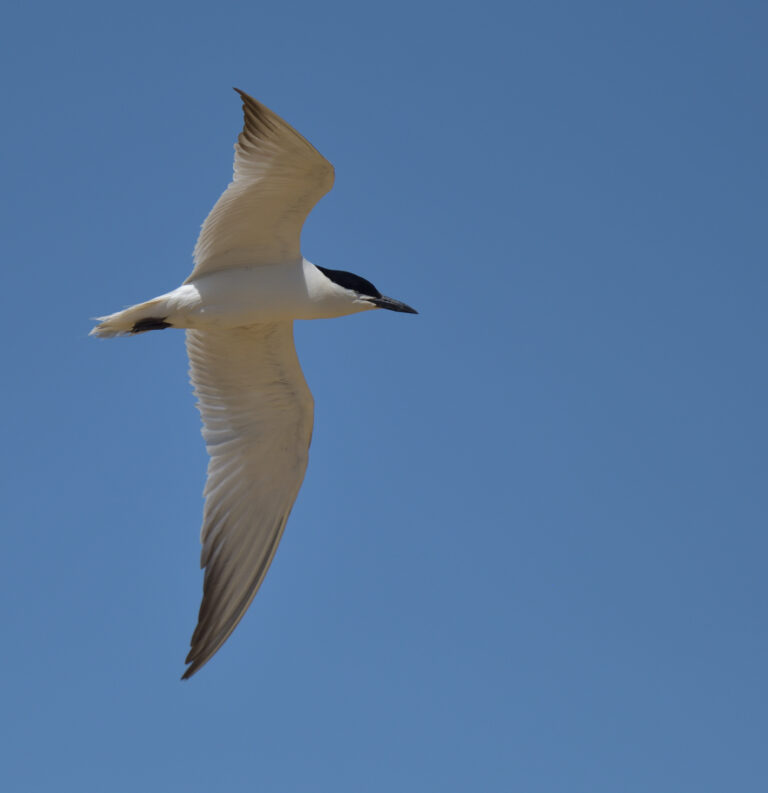
This morning, we begin with Black Redstart and then Serin, singing from the same aerial on the Parador roof. From here, we drive southwest towards the Portuguese border and as soon as we leave the main road, we start seeing plenty of birds like Spotless Starling, Corn Bunting, Bee-eater and Stonechat, plus new birds like Cuckoo, Turtle Dove and Woodchat Shrike on the way to the small village of Pino del Oro. Once here, we all pile out to watch a circling Egyptian Vulture and then set off on a lovely walk amid the Mediterranean ‘scrub’ with a beautiful and colourful floral display. Along the way, we see plenty more Woodchat Shrikes, as well as Iberian Grey Shrike, Iberian Magpie, Booted Eagle, Hoopoe, Jay, Nightingale, Subalpine, Orphean and Sardinian Warblers and a Woodlark singing on a rock pedestal as high as a house, as if singing from the rooftops! Midway along the walk, we take a brief rest on a Roman bridge, with numerous tiny toads crawling around, with striped backs just like our Natterjack. Further on, we almost tread on a small tightly coiled Grass Snake, basking in the sun right on the track.
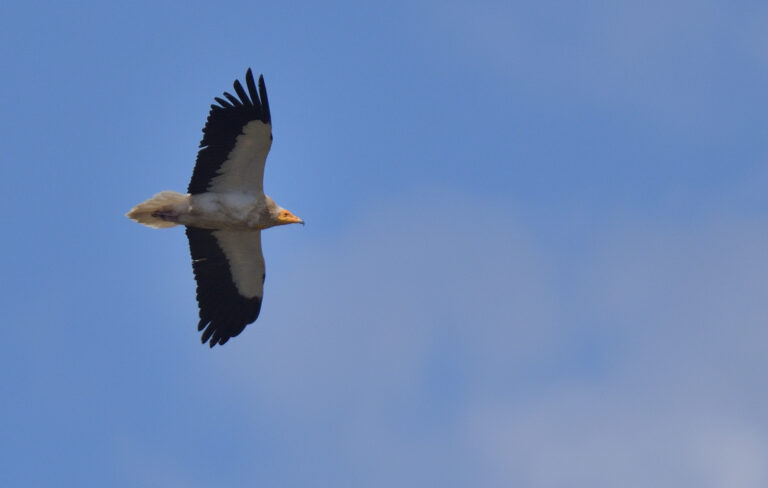
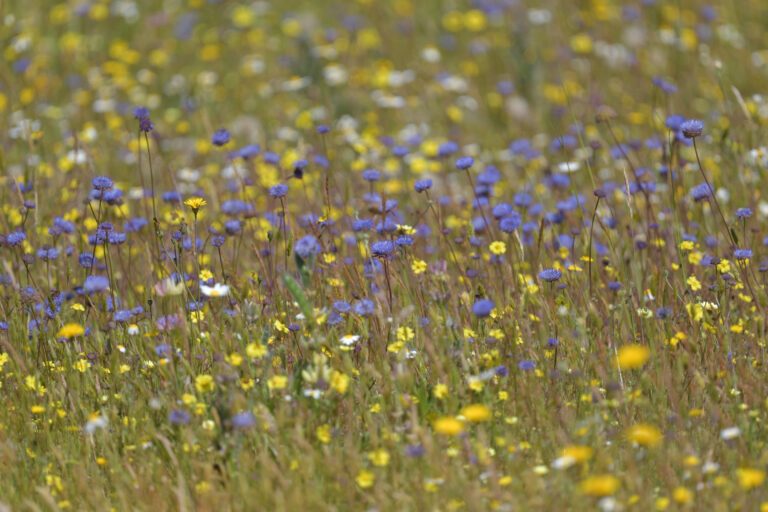
After a picnic lunch in the shade of evergreen oaks, we drive a short way further south into the Duero Valley where the river winds through a rugged gorge, traversed by the Puente de Requejo, a giant ‘Meccano’ bridge 300 feet above the river. From the viewpoint here, we add Crag Martin and Red-rumped Swallow to the trip list and then move on to the Ermita de Nuestra Señora del Castillo, where the nearby Mirador de las Barrancas looks across the winding gorge of the Duero which forms the border with Portugal. The next new bird here is a singing but shy Dartford Warbler, and from the spectacular viewpoint, looking into the deep river gorge below, we see another Egyptian Vulture circling above us, while numerous Griffon Vultures float on the breeze, with several more perched on ledges on the Portuguese side of the river. Our last new bird of the day here is a singing Cirl Bunting.
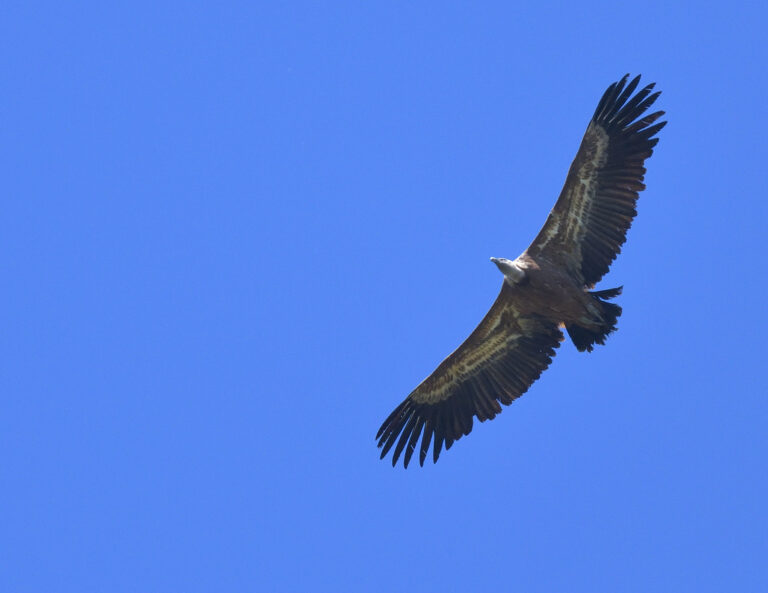
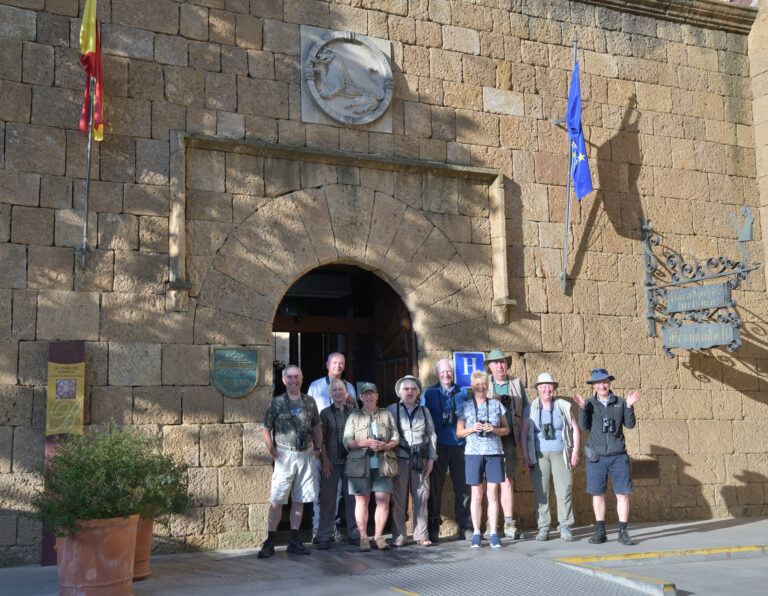
It’s time to leave our lovely Parador where the Serin is still singing from his favourite rooftop perch. After a couple of hours driving across the seemingly endless Castilian plain, we reach the foothills of the Cantabrian range, where a stroll along the shores of the Riaño reservoir, amid stupendous mountain scenery under a lovely blue sky, produces familiar new birds like Coal Tit, Blackcap, Garden Warbler, Whitethroat, Robin and Wren, although the circling Griffon Vultures remind us that we are not at home. Along the track, we also see several impressive Scarce Swallowtail butterflies. On the return leg of the walk, we also witness a mass release of pollen clouds from a stand of pine trees, looking as if they are vaping!
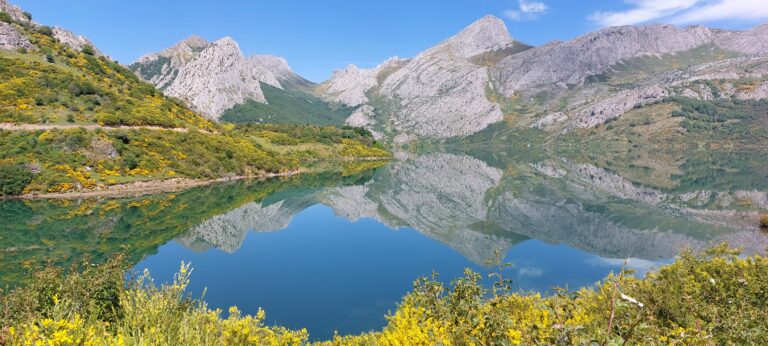
Further on, we stop for an al fresco lunch at a café in Portilla de la Reina and spot Grey Wagtails along the stream in front of the café. Next, we visit the Mirador de Llesba at an altitude of 5495 feet with a stunning panorama of the spine of mountains forming the Picos de Europa. From here, we have a convoluted drive north, with numerous hairpin bends, where a circling Golden Eagle is new for the list.
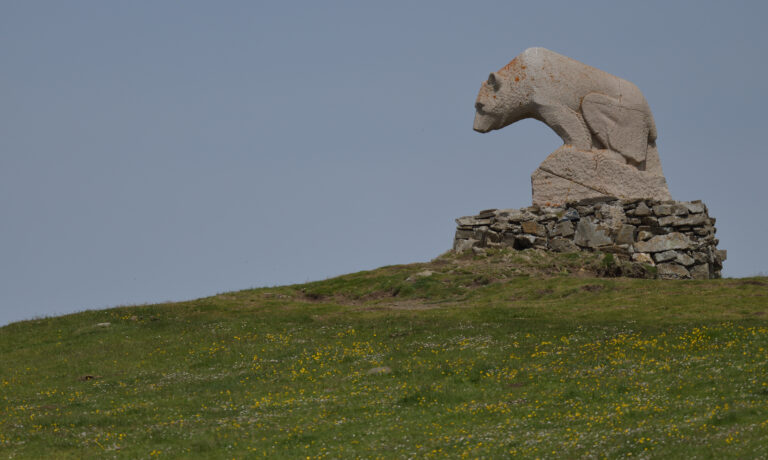
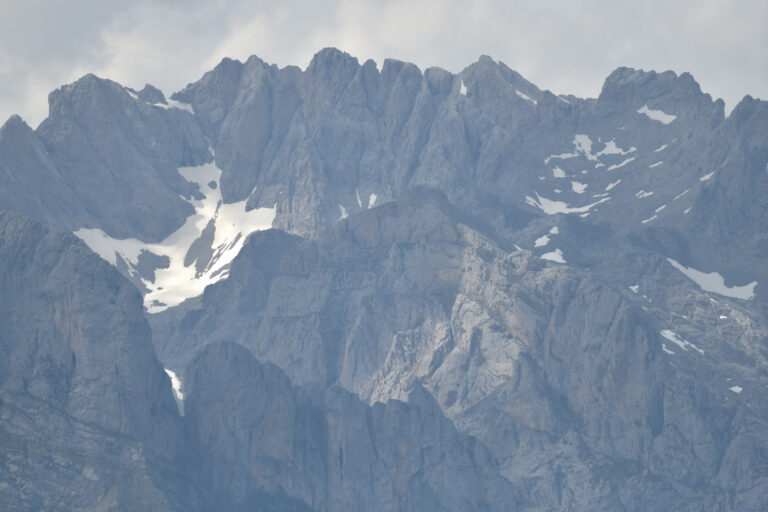
There is a cacophonous dawn chorus outside the hotel this morning where the congregation includes Song Thrush, Blackbird, Blackcap, Wren, Chaffinch, Short-toed Treecreeper and Serin. Once light, it’s a beautiful calm sunny day, perfect for the cable car ride from Fuente Dé up into the heart of the Picos de Europa. Waiting for the first cable car of the day, we spot Nuthatch, Firecrest and a Red Squirrel with a black tail. In just 3 minutes and 40 seconds, the cable car whisks us 2470 feet higher, to an altitude of 5981 feet with breathtaking views of towering limestone peaks in every direction, some still bearing the remnants of last winter’s snow. This is the home of high altitude specialities like Water Pipit, Alpine Accentor, Alpine Chough, Snowfinch and the highly sought, almost mythical Wallcreeper. Right outside the cable car station, we are met by numerous Alpine Choughs, hanging buoyantly on the stiff breeze just above our heads! Along the path, we soon notice Early Purple Orchids and deep blue Trumpet Gentians, and then spot the first of our targets, a singing Water Pipit. Further on, we also find a couple of Snowfinches and then sit down for a picnic, along with Griffons gliding high above and several Alpine Choughs eager to take handouts at arm’s length! During the picnic, we patiently watch a likely looking rock face in the hope of seeing a Wallcreeper. Lo and behold, one shows briefly for a few of the group, but despite a long stakeout the bird does not reappear. On the way back to the cable car, we at last find the final missing high altitude speciality; three Alpine Accentors, feeding close to the path. We also spot a couple of Red-billed Choughs and get better views of Water Pipit here before taking the cable car back to the valley floor for a drink outside the café in the sunshine, where the cable car station thermometer reads 24°C. We had been very lucky with the weather today, and also lucky with most of the target birds, so a very good day.
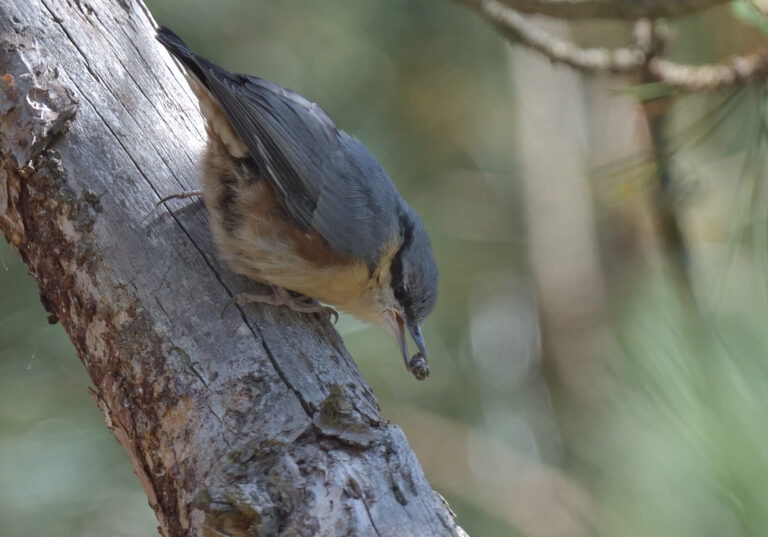
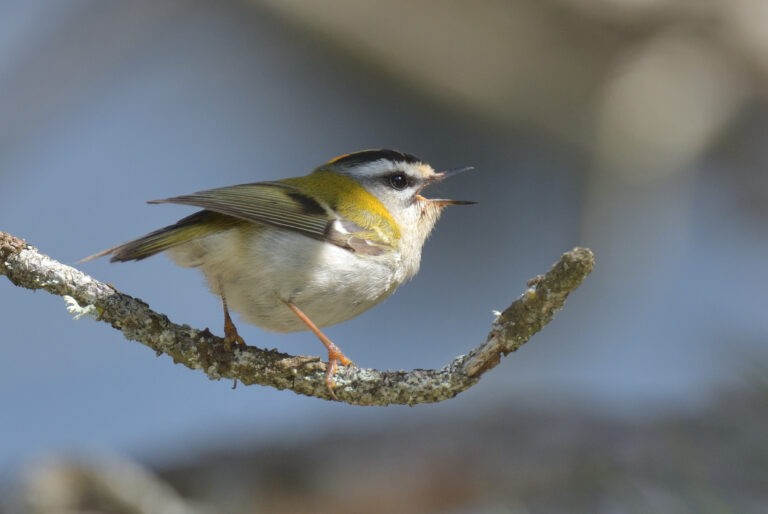
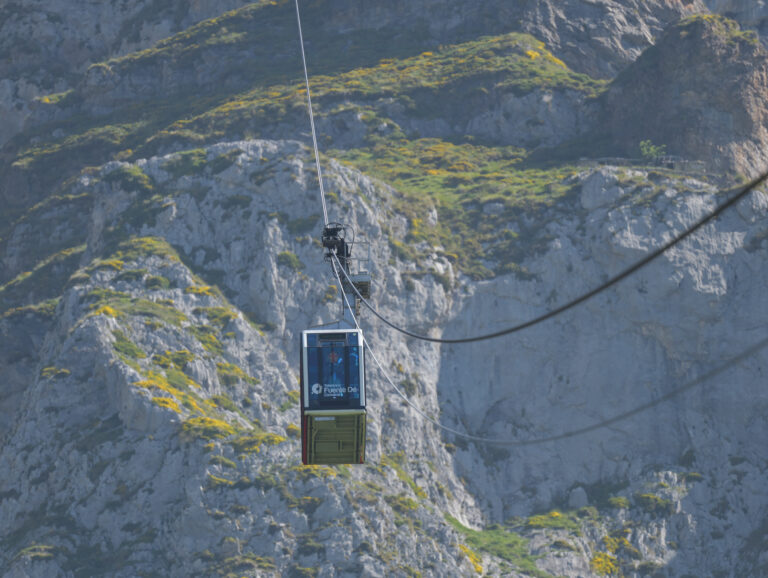
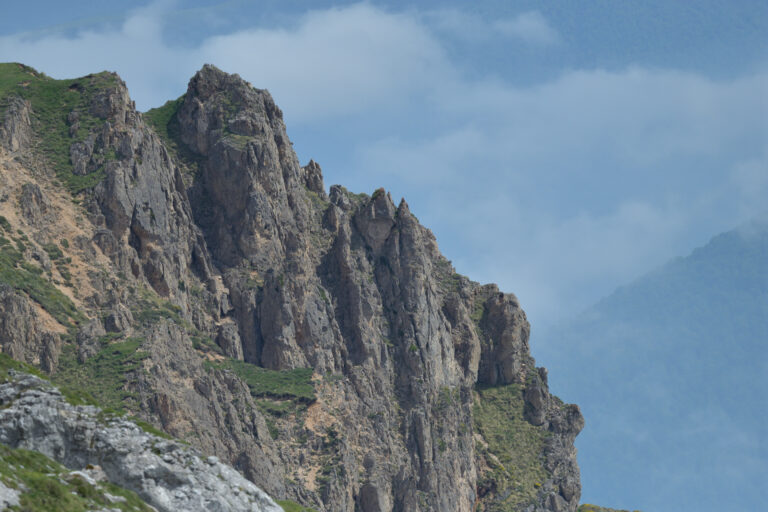
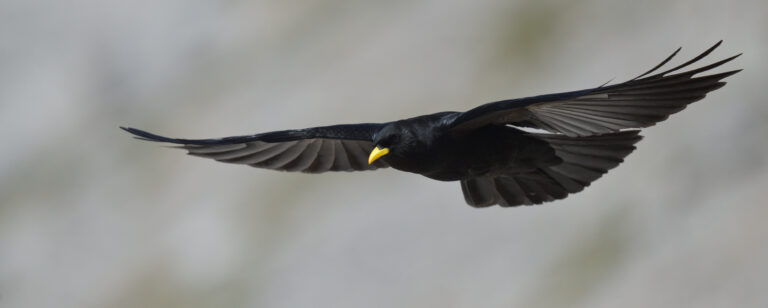
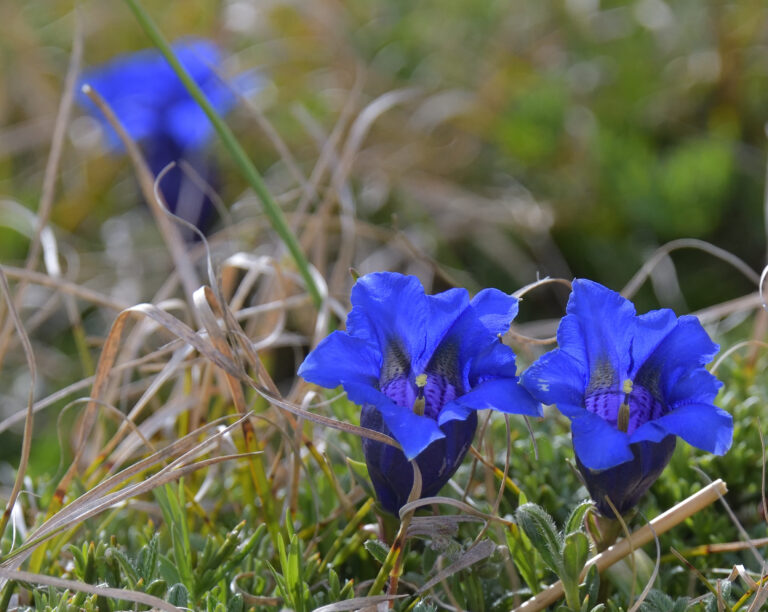
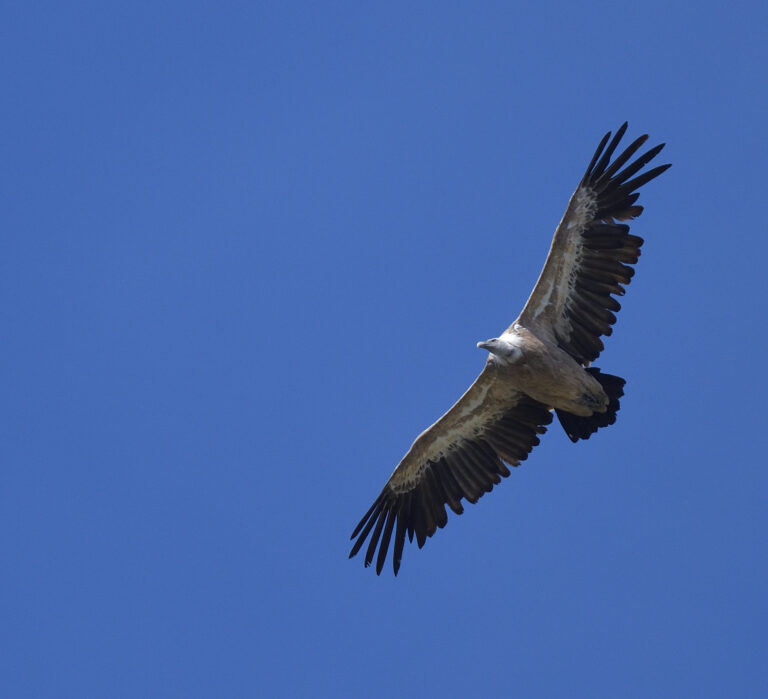
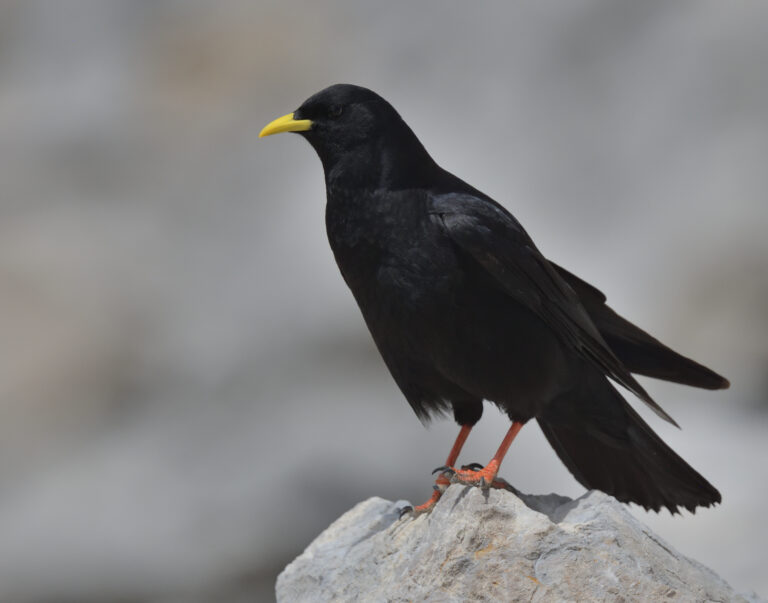
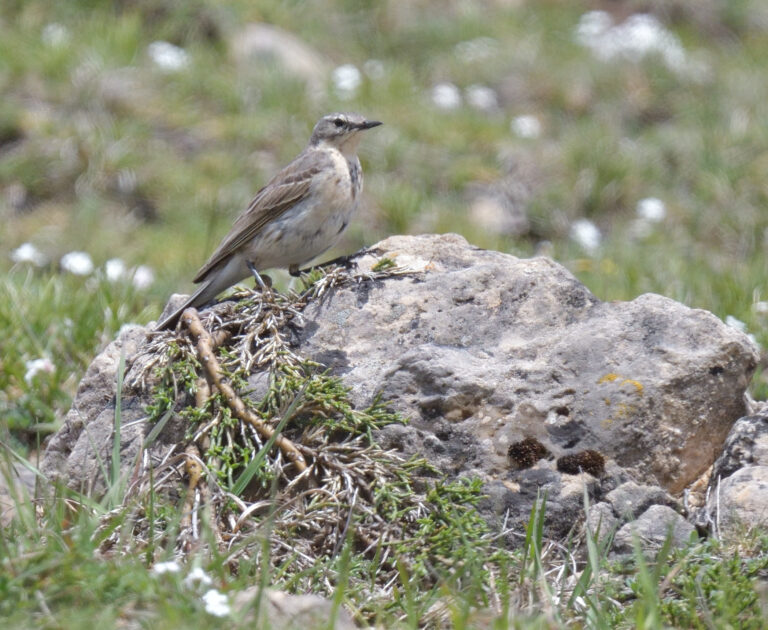
There’s low cloud shrouding the wooded hills this morning, masking most of the wonderful scenery, as we drive to a tiny hamlet called Brez for a normally scenic walk on footpath 27, were it not for the mist. Setting off along the walk, we pass a water trough full of humungous tadpoles almost three inches long! Just as we leave Brez, we scope a male Common Redstart, singing from the same bare branches as one singing there on my previous visit in 2017! A few yards further on, we find a male Cirl Bunting singing from a wire and watch an Egyptian Vulture circling the valley below us. Moving on, we find the first of many singing Bonelli’s Warblers and hear the tremendous whoosh of air from the wingbeats of a low flying Griffon Vulture, forced low by the heavy clouds, while others sit on low rocks, waiting for the weather to improve. Passing through lovely woods of oak and beech, with lots of dew-laden Funnel Web Spiders’ webs all over the ground, we find a variety wildflowers including Viper’s Bugloss, Creeping Bellflower, Aqualegia, Large Selfheal and Saint Dabeoc’s Heath, plus Common Spotted and Bee Orchids. Meanwhile, the bird sightings continue with a very feisty little Firecrest with a blazing orange punk-style hairdo, followed by a singing Short-toed Treecreeper, a Middle Spotted Woodpecker, a Marsh Tit, a male Rock Bunting and an over-flying flock of around thirty or more Red-billed Choughs. Back in Brez, contrary to the forecast, the visibility is much better and our picnic lunch in the sunshine coincides with the arrival of a low flying Egyptian Vulture, followed by a steady stream of at least fifty incoming Griffons, appearing almost from nowhere as they drop down to investigate the corpse of a small goat.
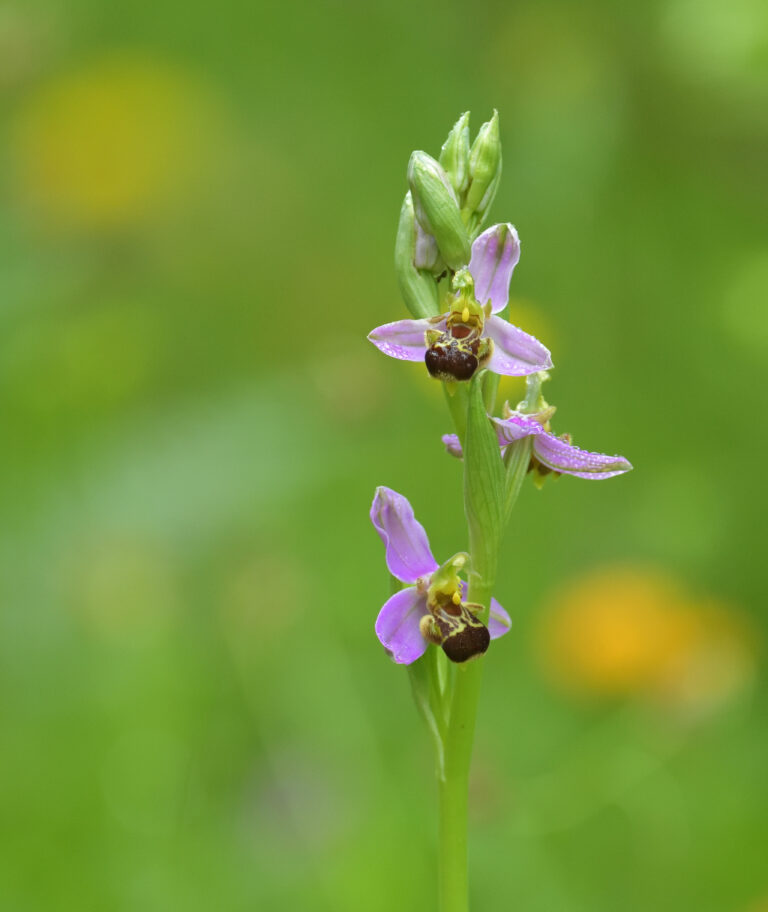
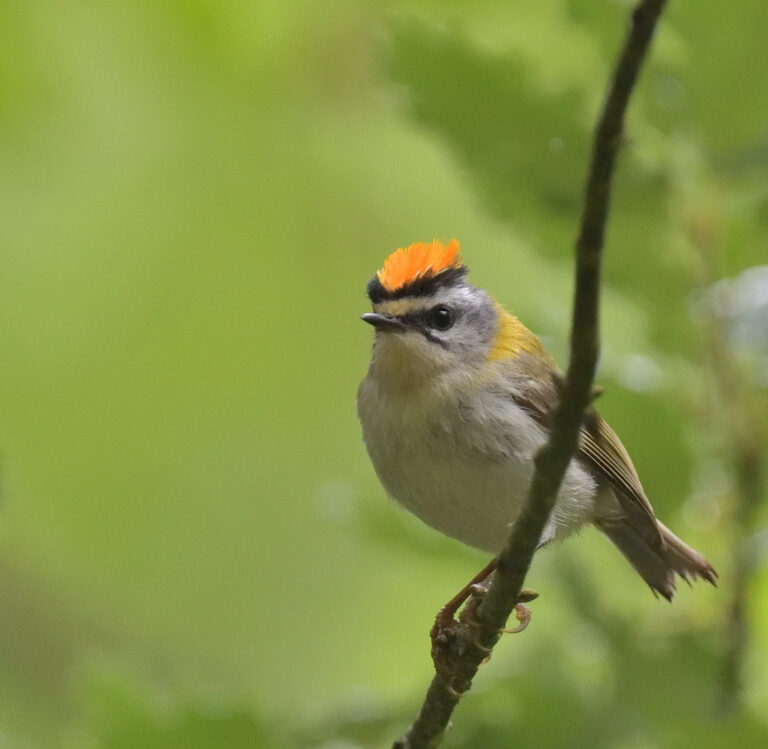
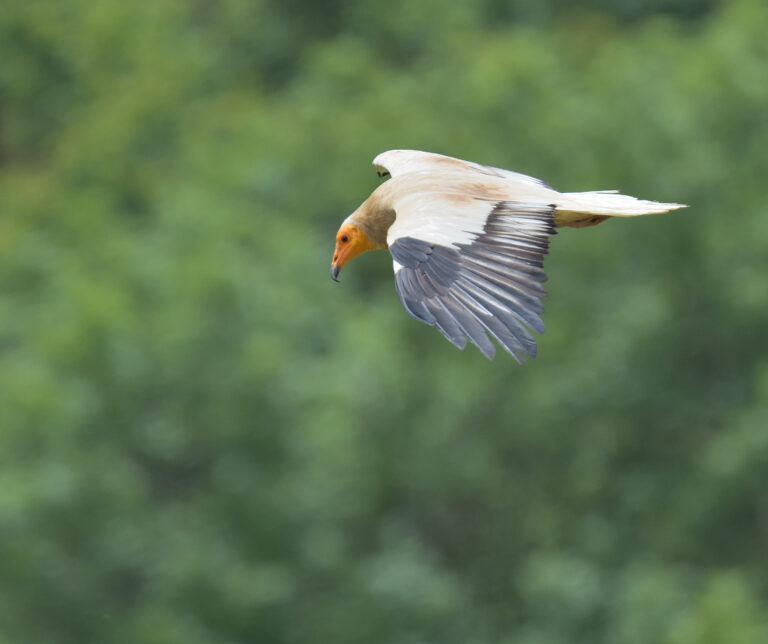
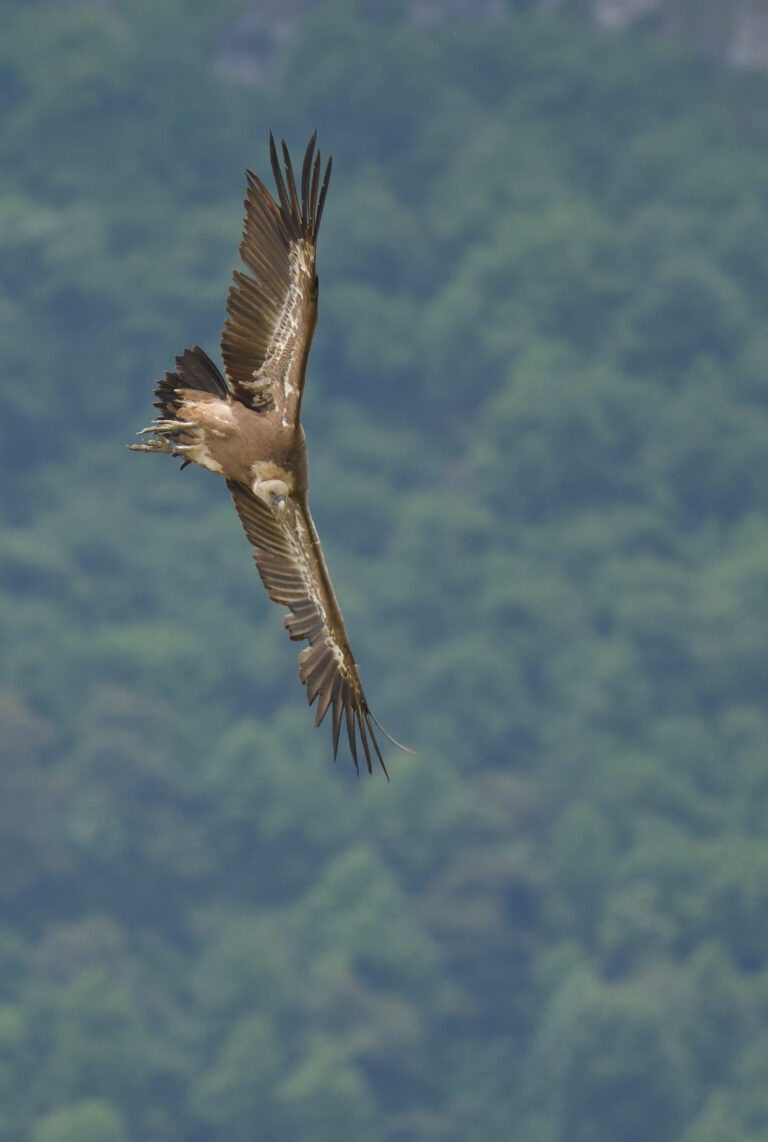
This afternoon, we visit a picnic site above Pendes, where the ancient Sweet Chestnuts, with huge, gnarled girths and dead branches protruding like antlers, are home to Common Redstarts, Tree Pipits and a pair of very obliging Wrynecks, seen well by all. Clouded Yellow and Marbled White butterflies also show well here and above the picnic site, the panorama of rugged peaks is spectacular, with another Egyptian Vulture and plenty more Griffons gliding by and resting on ridges. In the distance, we also pick out some Alpine Swifts.
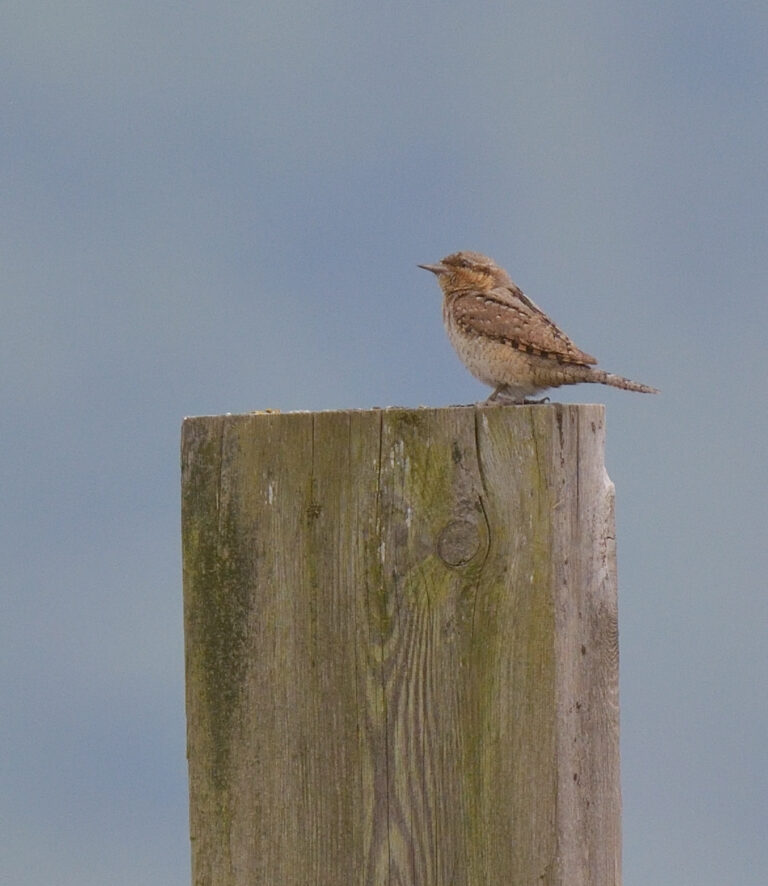
In view of today’s wet weather forecast, we begin with an “easy” local walk along the Rio Cubo, which looks great for Dippers. Along the way, we find Blackcap, Marsh Tit, Firecrest, Kestrel, Mistle Thrush, Grey Wagtail, a family of Nuthatches and Crag Martins going in and out of their mud cup nest plastered onto a cliff beside the path, but no Dippers and not a sniff of a Black Woodpecker, despite the prime habitat amid slopes forested with mature beech, oak and pine. Just as we reach the end of the circuit, thunder rumbles and it begins to rain, so we head back to the nearby hotel for lunch. After lunch, the forecast finally rings true and so we enjoy the scenery from the windows of the super Hotel del Oso.
It’s still grey and damp this morning, so time to go home, having seen 105 different birds such as those strutting Great Bustards, the posing Wrynecks and so many raptors, as well as all the wildflowers and butterflies amid so much wonderful scenery.
